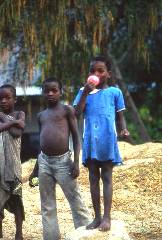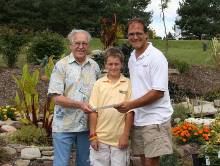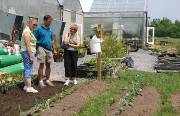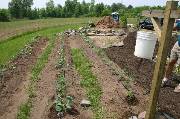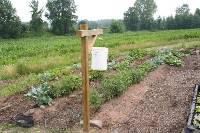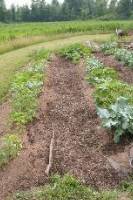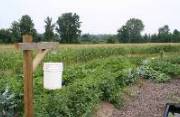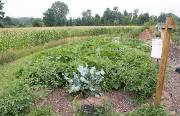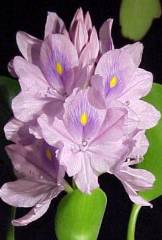
|
Hyacinth Project and the Children of Malawi |
By Larry Nau, Churchville, New York, USA
Click images to enlarge
Malawi, the Warm Heart of Africa, will always be especially
close to my own heart. I attended the University of Rochester
with majors in biology and anthropology. My educational experience
took me to the continent of Africa twice. In 1979 I was in Liberia
with Crossroads Africa rebuilding the School for  the Deaf outside the capital of Monrovia.
My destination was Lake Malawi in 1982. There I worked with a
research team from Duke studying the Cichlid fishes of Lake Malawi.
Our work helped to understand the reproduction of the fish which
are a major source of protein for the Malawi people. Both experiences
were personally enriching and changed my outlook on the world.
the Deaf outside the capital of Monrovia.
My destination was Lake Malawi in 1982. There I worked with a
research team from Duke studying the Cichlid fishes of Lake Malawi.
Our work helped to understand the reproduction of the fish which
are a major source of protein for the Malawi people. Both experiences
were personally enriching and changed my outlook on the world.
Early in 2005 I became aware of the work of Dick Chapin of
Chapin Living Waters, based in Watertown, New York, who provides
simple root irrigation kits for the people of Malawi and others
around the world. With this bucket kit, the dry, lifeless soil
can produce a bountiful crop of fresh vegetables. The bucket
feeds irrigation tape with water. The water drips out of holes
into the soil and the adjacent roots. Each system can water up
to ninety-eight plants. The vegetables produced are food for
the family and the excess may be sold providing much needed cash
for clothes, medical visits and school supplies. In Malawi the
program is working so well that a food processing plant was built
and rations are sent out to feed over 25,000 children a month!
The requests for bucket kits are overwhelming. Each kit costs $10.00 and an average of $7.50 to ship it to its destination. The bucket kits last five to seven years in the field. Recipients of the kits are schooled in basic soil preparation, fertilizing, seed germination and plant care.
Often affectionately called the "father of drip irrigation", Dick Chapin has made major contributions to the drip irrigation industry for over 30 years. He holds 25 patents, and developed and patented Twin-Wall® hose which became the industry standard. Through the years, Dick has received many awards and honors for his tireless efforts on behalf of the irrigation industry. He developed the bucket kit after a trip to Senegal in 1974 and began to distribute them through the Foundation soon thereafter.
We grew tomatoes, peppers, eggplant, pumpkins, watermelon, cucumbers and acorn squash. The pumpkins were the biggest I had ever grown! It was actually fun as the two high school seniors that were working for me this summer had no concept of how to grow vegetables! They learned a lot and helped me help people in Malawi.
If you too would like to donate, see:
More about Dick Chapin | More about bucket kits
More about Bergen Water Gardens and Nursery
